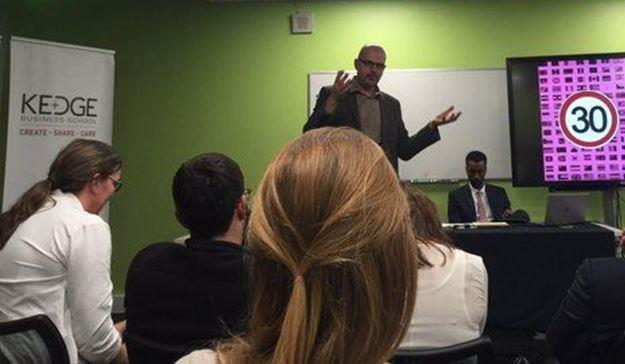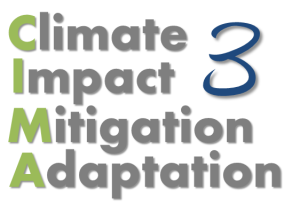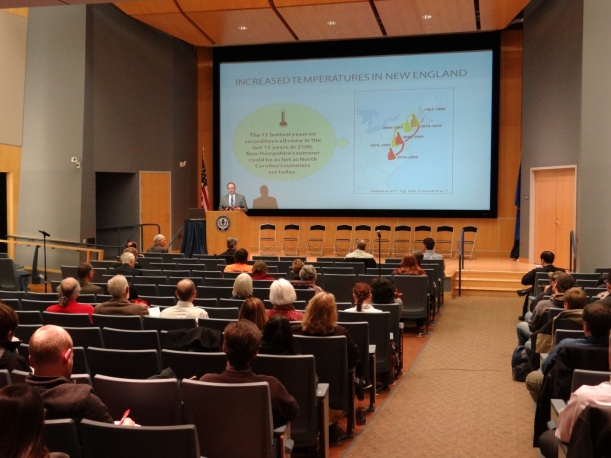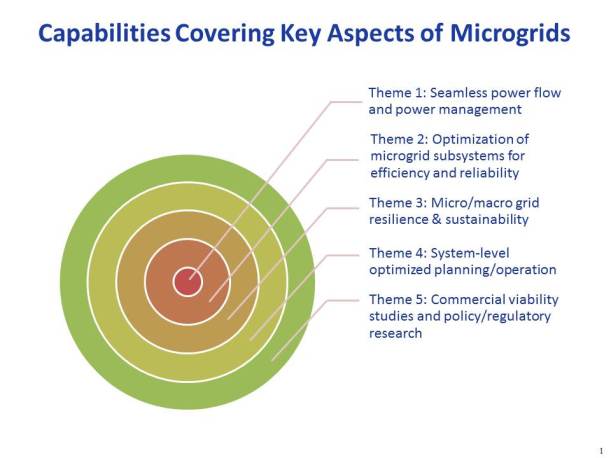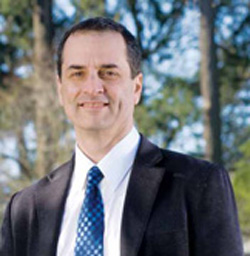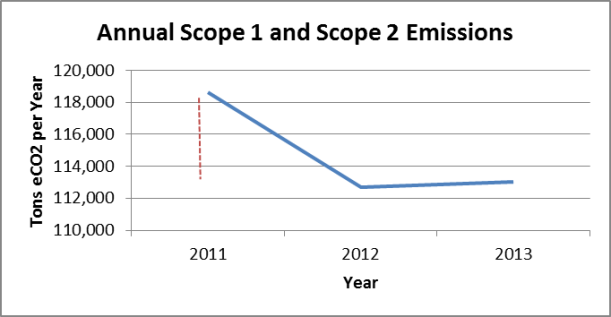As a contingent of UConn students, faculty, and staff arrived at COP22 in Marrakech, Morocco, it became clear that, although they were more than 3,000 miles away from home, the uncertainty and concern surrounding the recent U.S. election were being felt just as strongly. The following blog posts were submitted by members of the UConn contingent, detailing their experiences at COP22 in light of the recent election:
The World Without U.S. Mark Urban
An Uncertain Future Ben Breslau
UCONN@COP22: The Trump Opener Kristin Burnham
Hoping for a Better Donald: What the 2016 Election Means for Climate Change Policy Klara Reisch
Since these blogs were written, President-elect Trump has moderated his position, and stated that he is “open-minded” about the Paris Agreement; however, Myron Ebell, a vocal climate change skeptic for many years, remains in charge of the President-elect’s EPA transition team.
The World Without U.S.
Mark Urban, Biologist, Associate Professor in Ecology and Evolutionary Biology
“Maybe it won’t be so bad,” a taxi driver said as he weaved through the tangle of motorbikes, pedestrians, donkey carts, and buses clogging the streets of Marrakech, Morocco. I flinched when he slammed on the brakes or accelerated through precarious gaps in the traffic. He was talking about U.S. President-elect Trump. He was trying to make me feel better even though the world was a very different place than it was just one year ago.
Last December, the world met in Paris for the 21st meeting of climate delegates to the United Nations, or COP21 for short. The world agreed to try to limit global warming to 1.5 °C above preindustrial temperatures. The Paris Climate Agreement exceeded expectations. The world and the UConn delegation celebrated in the streets of Paris. Some of our faculty and staff cried tears of joy when they heard the news.
Last year’s COP21 was one of shining optimism. This year’s COP22 in Marrakech was one of gritty determination. If the Paris COP was a flute of French champagne, the Marrakech COP was a can of warm Casablanca beer.
Already the promises of just a year ago are fading. The world hasn’t figured out how to implement the lofty goals of the Paris accords. Whereas President Obama helped lead the fight against climate change, his successor threatens to withdraw.

Against this backdrop, our second UConn delegation of undergraduates, faculty, and staff flew to the highlands of central Morocco. Marrakech, an ancient center for African trade, religion, and culture, provides the nexus for protecting all those things from a changing climate. Just beyond the ancient Jemaa el-Fnaa outdoor bazaar and outside the high pink walls of the Kasbah, the massive white tents of COP22 rose from a flat field. Out front, flagpoles of the world skewered the big African sky.
Like in Paris, we watched panel discussions about everything from the economy of climate adaptation to the sustainable development of Africa. We visited the government and corporate solutions tent, where new electric cars and photovoltaic cells shimmered under LED lights. We visited the stands of non-profit groups, cities, countries, and regions from around the world to hear about their climate solutions. The Nordic countries’ booth was expansive, white and clean. The African section was bright and welcoming. The Dutch offered a full bar, proudly extolling the ‘Dutch Approach.’ But I never found the US booth.

The US did take the center stage at the conference when US Secretary of State John Kerry delivered an impassioned argument for continuing to address climate change. Not managing to talk our way into the tight security of the UN blue zone, a group of us watched Kerry’s address to the assembled diplomats on an Iphone propped against a water bottle in an expat hotel. He was not speaking to the world, but to his country. Quoting Winston Churchill, Kerry said “It is not enough that we do our best; sometimes we must do what is required.”
The white, blubbering specter of a Trump presidency sapped strength from world efforts. Yet, I returned more optimistic than when I arrived. The world ratified the Paris Agreement more quickly than ever thought. Cities around the world are advancing toward carbon neutrality. Businesses are developing clean technologies because they recognize that efficiency is good business. The world reconfirmed its commitment to addressing climate change. A large banner on the last day proclaimed “We Will Move Ahead!”
Maybe the taxi driver was correct. Maybe it won’t be so bad. The world is united against the climate threat, even if our government is not. The world will lead, even if the US will not.
An Uncertain Future
Ben Breslau, Student, Ecology and Evolutionary Biology

As we flew into Morocco, my mind raced. Like many of my environmentally conscious peers in the United States and beyond, I was still in shock from the previous week’s presidential election. Among his many campaign promises, President-elect Trump has spoken of promoting policies that would be disastrous to the national and global environment. He has discussed reinvigorating the coal industry, which will translate into massive health hazards for the people of Appalachia. He has also proposed to dismantle the Environmental Protection Agency. This agency has improved countless lives by directly reducing the amount of pollutants in our nation’s rivers, air and soil. He has also suggested opening up our National Parks to private industries for exploitation. This would not only severely damage America’s tourism industry, but it would also destroy unique and irreplaceable ecosystems. And most dangerous of all, he is seriously considered abandoning the 2015 Paris Climate Agreement. Since the United States is Earth’s second largest greenhouse gas emitter (and may again become the largest as China seeks more renewable energy), this could mean that our country, which stands as a beacon for freedom around the world, may irreparably contribute to the largest global crisis in our generation.
Needless to say, I was less than optimistic before we touched down in Africa. I felt something that others less privileged than myself have felt for years or even decades: a strong sense of disillusionment and betrayal towards the officials that are supposed to represent the interests of ALL Americans.
UCONN@COP22: The Trump Opener
Kristin Burnham, Student, Pathobiology and Molecular and Cell Biology
The Trump Opener: A cultural phenomenon observed at COP22 in which, once the nationality of a U.S. citizen is established, the opening remark of the conversation is about President-Elect Donald Trump.
“You know I’ve never met a Trump supporter,” Mostafa, a well-spoken, twenty something journalist from Cairo tells us as we wait for the bus from the Green Zone back to the hotel.
We comment that people who voted for Trump don’t come to climate change conferences, or to developing countries for that matter. The statement is laced with condescension, the implicit message clear: they don’t know better because they haven’t seen the things we have, they don’t know the things we know. It’s how we explain their seemingly inexplicable choice.
Rich Miller, from the UConn cohort comments that it’s interesting how close the rest of the world followed the U.S. election. Mostafa replies, “We’re all stakeholders – your elections affect us as much as they affect you, maybe even more.” And, to some degree, he is right. For better or worse, the U.S. is a global superpower. Our foreign policy brings not only humanitarian aid and other resources to developing nations, but also, all too often, our soldiers, our missiles, and our carbon emissions, which travel far beyond our borders.
Mostafa explains that he sympathizes, comparing many Egyptians’ dislike for their President of the past two and-a-half years, Abdel Fattah el-Sisi, to many Americans’ dislike of Trump. “I was a part of the Arab Spring,” he tells us. With pride and eloquence he says that our generation is more connected than ever before: How incredible it is that we can know the story and thoughts of a 16 year old girl in Palestine, a 41 year old man in Iraq… or a 20 year old girl from Connecticut.
 There is a lull in the conversation. Ben Breslau, a fellow student from the UConn group, asks “So what do we do?” Mostafa emphatically replies, “You wait. Please wait. You do nothing. You have patience,” almost pleading for the new US administration to stand behind the Paris Agreement, reached just last year at the historic COP21. He cares what we do. He cares because it affects him too.
There is a lull in the conversation. Ben Breslau, a fellow student from the UConn group, asks “So what do we do?” Mostafa emphatically replies, “You wait. Please wait. You do nothing. You have patience,” almost pleading for the new US administration to stand behind the Paris Agreement, reached just last year at the historic COP21. He cares what we do. He cares because it affects him too.
It’s not just what the president does that has a global impact. It’s what we all do. It’s the votes we cast, the revolutions we start, the passion of our convictions, and the causes we choose to champion.
A few minutes later we meet a delegate from Turkey, “You’re from America? I was here [at the conference] as the election results were coming in.” He says people cried and scheduled talks were abandoned to discuss instead the potential devastation Trump’s environmental policies could have on the world.
I hope that no matter what Trump does, no matter how drastic or inflammatory, we, as a country, can be more than his actions.
Let’s use the overwhelming feelings of frustration and helplessness to create a better United States. Let’s treat each other with more kindness. Let’s use the outrage and fear that surround Trump’s election to be a catalyst for change. Let’s join together to reduce our contribution to greenhouse gasses.
If we can’t take pride in our President, let us instead create a culture, country and carbon footprint we can be proud of.
Hoping for a Better Donald: What the 2016 Election Means for Climate Change Policy
Klara Reisch, Student, Molecular and Cell Biology
 I shuffled in and out of shops trying to find a souvenir in Marrakech when one merchant turned to me, chuckled and asked “you voted for Trump?” I was confused and slightly embarrassed that this election was following me deep into the Souks of the Medina, but I was not surprised. In fact, before that encounter, most panel discussions I attended at COP22 mentioned the election results back home, which named Donald Trump as our president-elect. Throughout the campaign, Trump argued that climate change is merely a hoax spurred by the Chinese and criticized the United States for spending money on environmental initiatives to minimize its effects. He had threatened to dismantle last year’s landmark Paris Agreement, and Trump and revoke the Obama Administration’s Clean Power Plan, which calls for a decrease in carbon emissions from power plants.
I shuffled in and out of shops trying to find a souvenir in Marrakech when one merchant turned to me, chuckled and asked “you voted for Trump?” I was confused and slightly embarrassed that this election was following me deep into the Souks of the Medina, but I was not surprised. In fact, before that encounter, most panel discussions I attended at COP22 mentioned the election results back home, which named Donald Trump as our president-elect. Throughout the campaign, Trump argued that climate change is merely a hoax spurred by the Chinese and criticized the United States for spending money on environmental initiatives to minimize its effects. He had threatened to dismantle last year’s landmark Paris Agreement, and Trump and revoke the Obama Administration’s Clean Power Plan, which calls for a decrease in carbon emissions from power plants.
 Either way, this election left many delegates and panelists concerned and unsure about the future of our world. I spoke with a panelist from GIZ, Klaus Wenzel, about the U.S.’s resistance of climate change policy. He talked about how workers are concerned about how they will be affected by this transition to things like clean energy. “People are afraid,” he said. “People are afraid of what this means for their jobs.” One of Trump’s main issues with renewable energy is that it is too expensive. Wenzel argued that although the return on investment takes time, renewable energy decreases the amount of air pollution and green house gas emissions, both of which have major effects on the environment and human health. “What is the worth of a premature death?”
Either way, this election left many delegates and panelists concerned and unsure about the future of our world. I spoke with a panelist from GIZ, Klaus Wenzel, about the U.S.’s resistance of climate change policy. He talked about how workers are concerned about how they will be affected by this transition to things like clean energy. “People are afraid,” he said. “People are afraid of what this means for their jobs.” One of Trump’s main issues with renewable energy is that it is too expensive. Wenzel argued that although the return on investment takes time, renewable energy decreases the amount of air pollution and green house gas emissions, both of which have major effects on the environment and human health. “What is the worth of a premature death?”
Of course, no one knows for sure what this election means for the United States and the rest of the world, but I heard opinions expressed by both sides in various panel discussions at COP22. Some said that the United States would not back out because of the geopolitical and trade implications, while others believe that the U.S. may step out of the game and perhaps force other countries to step up.
Hopefully, enough people will speak out against Trump’s environmental policies. If our president will not fight on our behalf, we will have to.
 The Sierra Club has just released its
The Sierra Club has just released its 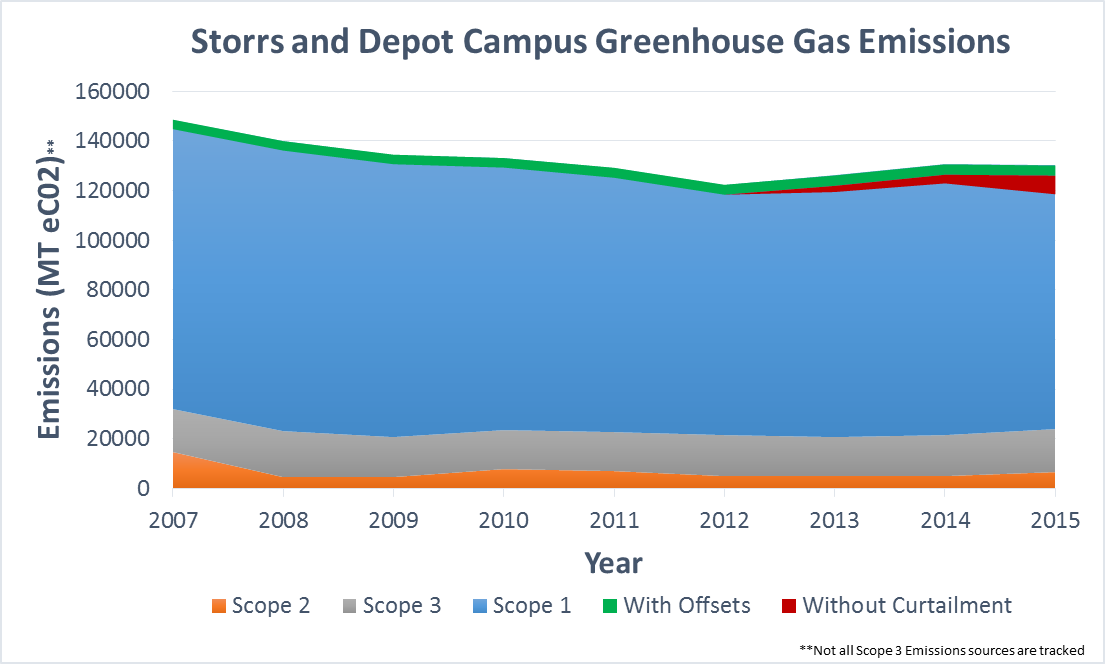

 So the Supreme Court’s decision was a huge victory for the climate deniers and a major setback for the rest of us. Below are links to two of the many recent articles and opinion pieces about the SCOTUS’s ruling.
So the Supreme Court’s decision was a huge victory for the climate deniers and a major setback for the rest of us. Below are links to two of the many recent articles and opinion pieces about the SCOTUS’s ruling. Conservative Republicans who control the U.S. Senate, mostly representing states that are still heavily dependent on cheap and dirty coal for generating electricity, are threatening to block approval of any nominee advanced by President Obama. Meanwhile, the more progressive West Coast and Northeastern states, like Connecticut, which have long since transitioned away from coal, might actually stand to gain an economic advantage through the enactment of the CPP. Our state and others are joining EPA in the legal defense of the CPP and would like to see the President appoint a climate realist to SCOTUS, sooner rather than later.
Conservative Republicans who control the U.S. Senate, mostly representing states that are still heavily dependent on cheap and dirty coal for generating electricity, are threatening to block approval of any nominee advanced by President Obama. Meanwhile, the more progressive West Coast and Northeastern states, like Connecticut, which have long since transitioned away from coal, might actually stand to gain an economic advantage through the enactment of the CPP. Our state and others are joining EPA in the legal defense of the CPP and would like to see the President appoint a climate realist to SCOTUS, sooner rather than later.


